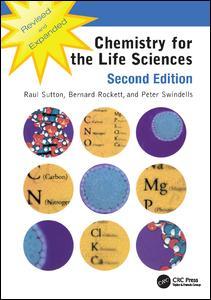Description
Chemistry for the Life Sciences (2nd Ed.)
Lifelines Series
Author: Sutton Raul
Language: English
Subjects for Chemistry for the Life Sciences:
Keywords
Mol Dm-3; Vice Versa; Mmol Dm-3; Ethanoic Acid; Transition Metals; kJ Mol-1; REDOX Half Reactions; Standard Reduction Potential; Lone Pair Electrons; Electron Conguration; Molar Mass; Full Outer Shell; Outer Electron Shells; Hybrid Orbitals; Structural Formula; Carbon Carbon Double Bonds; Carbon Hydrogen Bond; Alcohol Dehydrogenase; Equilibrium Constant; Covalent Bond; Lone Pair; Ve Membered Ring; Si Unit; Co-ordination Number; Molecular Orbitals
Publication date: 07-2017
· 17.8x25.4 cm · Hardback
Publication date: 11-2008
· 17.8x25.4 cm · Paperback
Description
/li>Contents
/li>Readership
/li>Biography
/li>
Presents short topics tied to numerical or conceptual ideas, reinforced with worked examples and questions
Retaining the user-friendly style of the first edition, this text is designed to eliminate the knowledge gap for those life sciences students who have not studied chemistry at an advanced level. It contains new chapters on ?
· Water, covering the mole concept and colloids
· Gases, discussing pressure, gas laws, partial pressure, solubility of gases, and diffusion
· Metals in biology, including properties, oxygen carriers, biocatalysis, charge carriers, and toxicity
The authors divide their analysis of carbon compounds into two chapters. One focuses exclusively on aliphatic carbon compounds, while the other provides a greatly expanded exploration of aromatic carbon compounds, isomerism, amines and amino acids, including benzene, aromaticity, types of isomerism, and absolute configuration. With a current examination of organic and biological reactions, this instructional volume also features end-of-chapter questions and provides a solutions manual for qualified instructors.
Key Features:

